Sony XH95/X950H (KD-65XH9505) review: the best 4K LED TV for its price
The Sony XH95/X950H is a brilliant 4K LED TV, delivering dazzling HDR and superb motion for sports

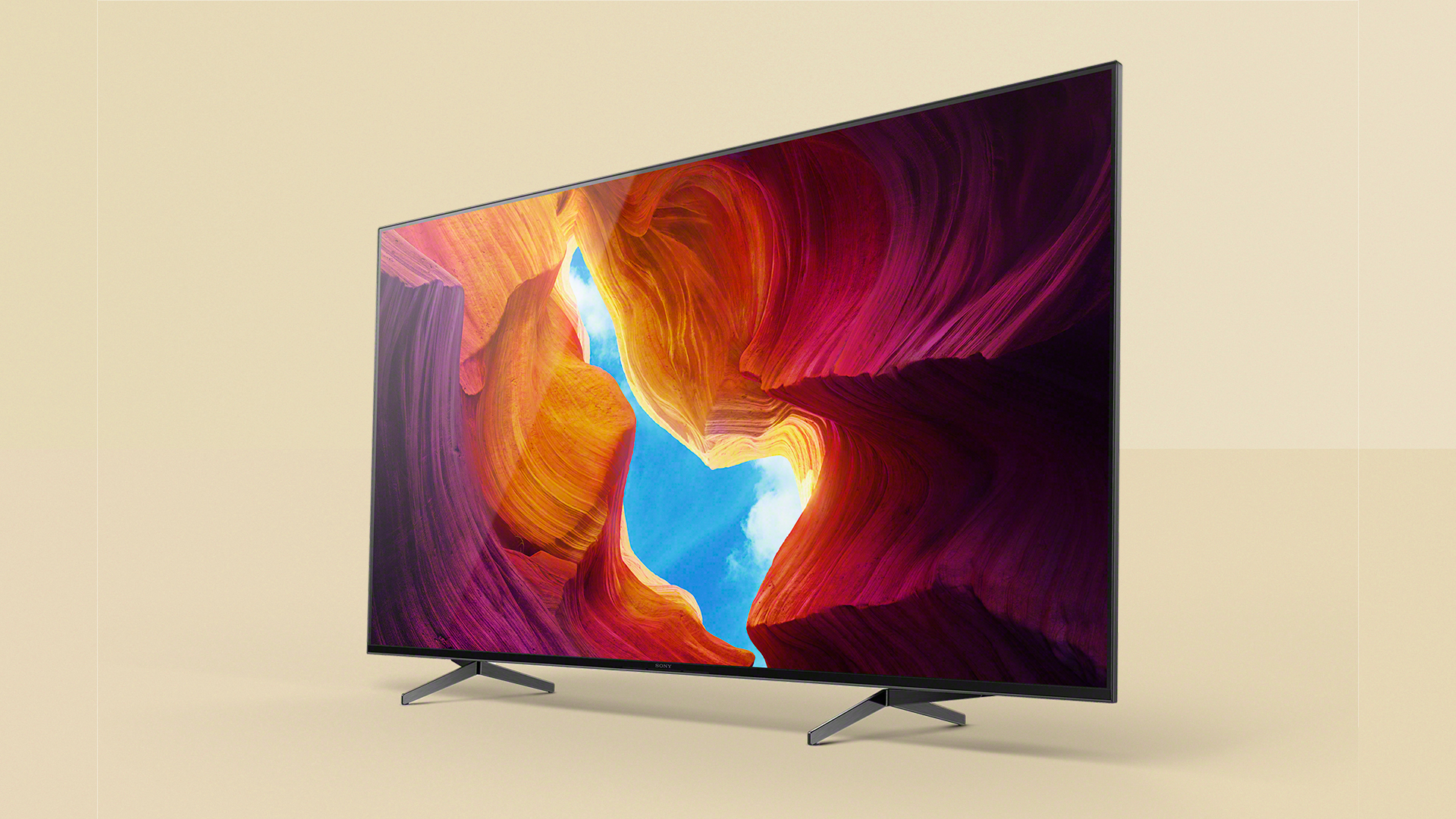
The Sony XH9505 is an often sensational performer that will be very hard for any other TV in its price range to beat. While it doesn’t introduce as many new features over its predecessor as we might have liked, its subtly but critically refined pictures and spectacularly revamped sound still make it a significantly better buy.
-
+
Extremely punchy HDR and super-refined SDR pictures
-
+
Powerful, dynamic sound
-
+
Decent value for what’s on offer
-
-
No HDR10+ support
-
-
Lacks a few next-gen gaming features
-
-
Backlight blooming occasionally an issue, especially with 21:9 content
Why you can trust T3

Welcome to T3's Sony XH95/X950H (KD-65XH9505) review. Named the Sony XH95 in the UK or X950H in the US, the brand's flagship 4K LCD TV for 2020 packs in masses of high-end tech to give you dazzling visuals including a direct LED backlighting system with local dimming, Sony’s most powerful X1 Ultimate image processor, the company's wide viewing angle technology, and a powerfully potent new Acoustic Multi-Audio sound system – all tucked into a super sleek design.
Together, these features have launched the set into our list of the best TVs – in its price range, you'll struggle to find a TV that does it better, particularly from LED TVs. There is strong competition from the best OLED TVs, but even those struggle to match it for price for new models.
We've tested the 65-inch Sony KG-65XH9505 version for this review and broken it down into XXX categories: price and features, picture quality, sound quality, design and usability.
- Meet the best TVs under £1000
- Or the best TVs under £500
- The best soundbars, for bigger beefier TV audio
- Need to go smaller? Here are the best 43-inch TVs
- Or the best 32-inch TVs!
Sony XH95/X950H review: price, release date & features
The Sony KD-65XH9505 costs £1,999 in the UK, or $1,699 in the US under the name KD-65X950H. That’s obviously a chunk of change. It’s still, though, majorly cheaper than 65-inch versions of LG's CX OLED TV, or Samsung’s flagship 4K TV, the recently reviewed Q95T.
The XH95/X950H range was released in spring 2020, and is available in plenty of other sizes, including 49 inches (£1,199/$999), 55 inches (£1,599/$1,199), 75 inches (£2,699/$2,799) and 85 inches (£3,499/$3,999).
The prices also starts to look better and better as you run down the XH95’s feature list. For starters, its LCD panel is direct lit (where the LEDs sit right behind the screen, instead of at the edges), and separate zones of its LEDs can output different levels of light during any given shot. These features always contribute to a superior contrast performance from LCD TVs.
They’re backed up on the XH95, moreover, by Sony’s X-Tended Dynamic Range Pro, which manipulates the way power is distributed around the dimming zones so that dark areas look darker while bright areas look punchier.
There appear to be 60 separate dimming zones in the 65XH9505’s screen. This isn’t a huge amount. Though experience increasingly suggests that it’s not always just the number of dimming zones you have that counts; it’s what you do with them – we saw that with the Samsung Q80T.
Which brings us to Sony’s X1 Ultimate processor. This is Sony’s most powerful processor to date, and while it doesn’t really expand on 2019’s version, it’s packed with picture-enhancing features and has delivered superb results in the past.
Key features of X1 Ultimate include Super Bitmapping for removing colour striping from HDR pictures, a database-driven system for upscaling sub-4K content, and Object-Based HDR Remaster for converting standard dynamic range sources to HDR on most of the XH95’s picture presets.
Sony’s X-Motion Clarity technology, meanwhile, uses the local dimming system to achieve less of a brightness compromise than you’d normally get when tackling TV judder with a black frame insertion system.
The 65XH9505 carries Sony’s X-Wide Angle technology, too, so you can watch it from almost any angle without pictures losing colour or contrast. Previous versions of this have tended to compromise contrast, though, so it will be interesting to see if Sony’s new flagship 4K TV has tweaked the viewing angle/contrast balance.

Sony has joined many other brands this year in introducing a new Ambient Optimisation system to some of its TVs, such as raising or lowering the brightness depending on the light levels in your living room. On the XH95, though, this doesn’t just apply to pictures. There’s also a sound optimisation feature that takes account of not just the shape of your room but also room features such as chair and curtain positions.
The picture side of the optimisation system intelligently enhances various elements of the picture to try and make pictures look the same in a bright room as they would in a dark room.
The XH95’s biggest advances arguably come with its audio system. For starters, two rear-mounted ‘sound positioning tweeters’ contribute to a new Acoustic Multi-Audio feature which seeks to make sounds appear to be coming from the correct part of the screen.
This is backed up by a new X-Balanced Speaker boasting an unusual elongated egg shape and an ultra-refined components to deliver what Sony claims is much more dynamism and distortion-free volume and range than you’d get from regular slim TV speakers.
From here on in, the XH95’s feature story gets more mixed. So, for instance, while it supports the HDR10, HLG and Dolby Vision HDR formats, it doesn’t support the HDR10+ format which, like Dolby Vision, adds scene by scene picture info to HDR streams to help compatible TVs do a better job. To be fair, there’s much more Dolby Vision content around than HDR10+ content, but there are TVs out there now that support both formats.
Sony also hasn’t joined many of its rival TV brands this year in offering support for either the Hollywood-approved Filmmaker Mode, or the Dolby Vision IQ system that combines an assessment of room conditions with Dolby Vision’s extra image data to deliver a consistent picture experience in different light levels.
Sony’s argument for not carrying such features is essentially that it believes its own X1 Ultimate processor can deliver pictures so good that they don’t need any ‘help’. And it seems IMAX agrees, for the XH95 has been certified by IMAX as good enough to do full justice to the ultra clean, ultra dynamic IMAX Enhanced picture system that’s available on some 4K Blu-rays and (in the US) Fandango streams.
The XH95 also carries a Netflix Calibrated mode, designed to get the TV looking as close as possible to the quite proscribed mastering setup Netflix uses when making its own content.
The final bit of mixed feature news concerns the XH95’s connections. For while there are four HDMIs, and one of these supports eARC technology for lossless Dolby Atmos passthrough, there’s no support for such (potentially) key next-gen gaming features as for 4K 120 frames-per-second playback, Automatic Low Latency Mode switching or Variable Refresh Rate support – if you're looking for the best gaming TV ready for the PlayStation 5 and Xbox Series X, this is not it.
Provided you remember to activate the Game mode manually when you’re gaming, though, it reduces input lag to a pretty respectable 18.5ms.
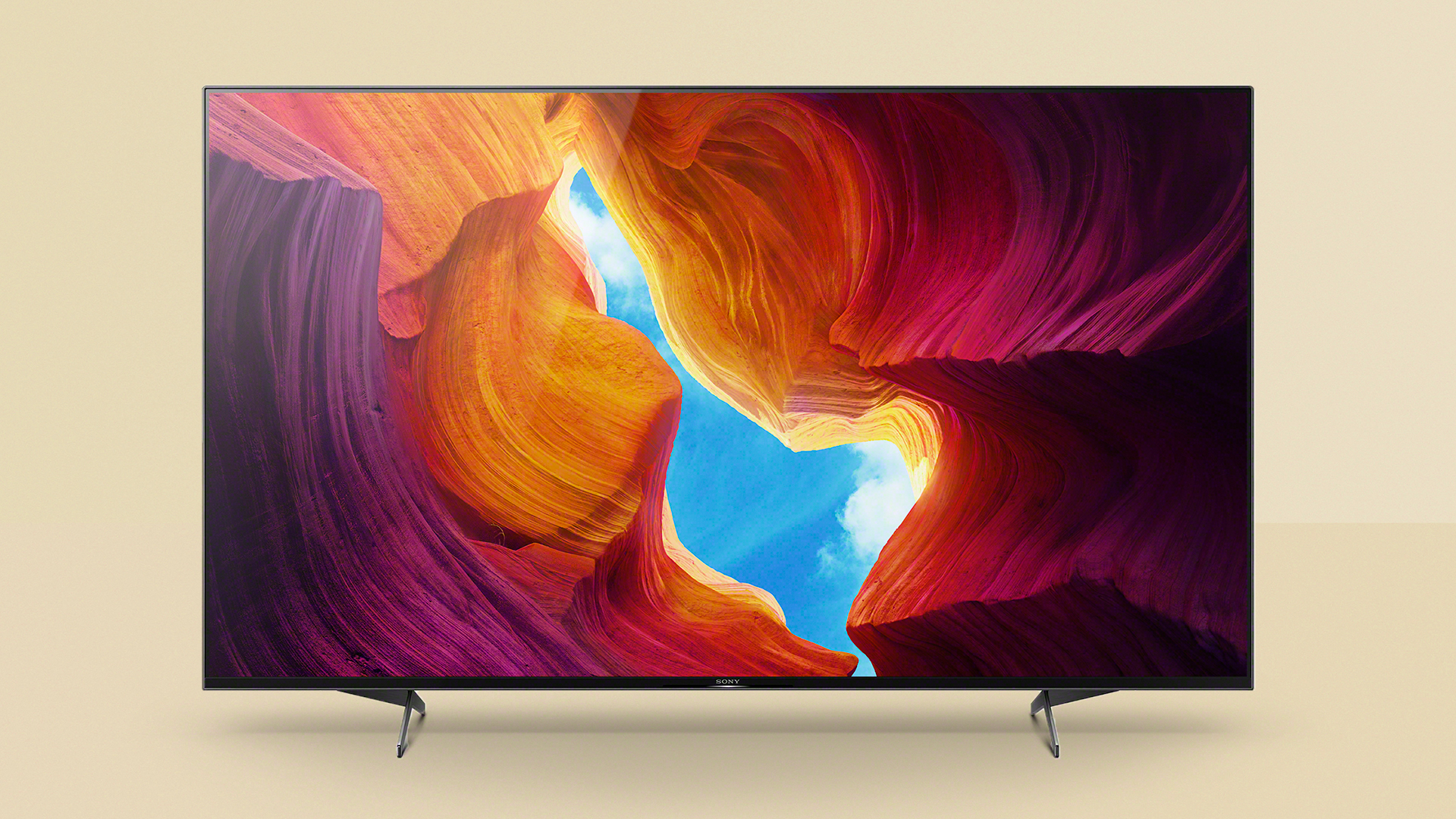
Sony XH95/X950H review: Picture quality
In the ways that really matters, the Sony XH95/X950H’s pictures are pretty glorious.
They’re extremely bright, for starters. The KD-65XH9505's peaks (measured on a white HDR window covering 10% of the screen) of just over 1,000 nits in Standard mode and around 980 nits in Cinema mode sit at the higher end of the LCD TV spectrum (it's way more than the likes of the Panasonic HX800, for example), and are ideally placed to deliver HDR with the sort of dynamism and light range it deserves.
These brightness levels are very consistent, too. In other words, they don’t start dimming down fast like the even brighter peak light levels you get from Samsung’s Q95T. This consistency contributes to a superb sense of stability, with practically none of the distracting ‘jumps’ in overall brightness many LCD TVs show as they adjust their light output to suit changes in picture content.
The consistency of the 65XH9505’s brightness output plays into its colours, so that they retain as much punch and naturalism during dark scenes as they show during bright scenes. There’s no severe reduction in colour volume or tone slippage during dark scenes like there can be with TVs that manipulate their overall brightness between scenes more aggressively.
Unlike most TVs, the 65XH9505 retains pretty similar colour toning for both of its most sensible (unless you have the set calibrated using the Custom mode) Standard and Cinema picture presets. Which is pretty handy given that Sony’s proclaimed mission with all of its premium TVs is to try and colour match the tones delivered by its own professional mastering studio monitors.
Certainly, colours consistently look balanced, subtle and well matched to the gently warm tone TV and especially film studios tend to prefer.
The 65XH9505’s gentle picture warmth, crucially, avoids the yellow push that many rival LCD TVs introduce when you try to shift them from their typically quite ‘cool’ (blue-biased) tones.
Sony’s approach to colour proves especially effective with skin tones, which look consistently more natural across a wide range of content than they do on any other LCD TV we’ve seen to date.
Strong colour performances are generally dependent on good black levels and contrast. So its no great surprise – on one level – to find the 65XH9505 delivering mostly excellent black levels for such a bright LCD TV in this price range.
Even with notoriously tough-to-show dark HDR movie sequences, it can produce black colours that actually look black, without, as noted before, suffering with lots of distracting light level ‘wobbles’. The 65XH9505’s black levels don’t appear to be nearly as much affected by Sony’s X-Wide Angle technology as they have been before, even though the TV still supports much wider viewing angles than most LCD sets.
The 65XH9505’s native 4K pictures look refined, natural and textured. And as always with the X1 Ultimate processor, sub-4K images are upscaled superbly, leaving them looking more dense and sharp without making the results look forced or noisy.
Sharpness levels aren’t as high as those you can get with Samsung’s latest TVs. But you’re never in doubt with the 65XH9505 that you’re watching a 4K TV. And you can ramp up the sense of sharpness quite handily without messing the picture badly via the Reality Creation processor’s Resolution adjustment.
It also helps the 65XH9505’s sense of sharpness that its motion processing is so good. It gently reduces judder and motion blur without taking away the key 24 frames a second effect when watching films, or generating many unwanted side effects.
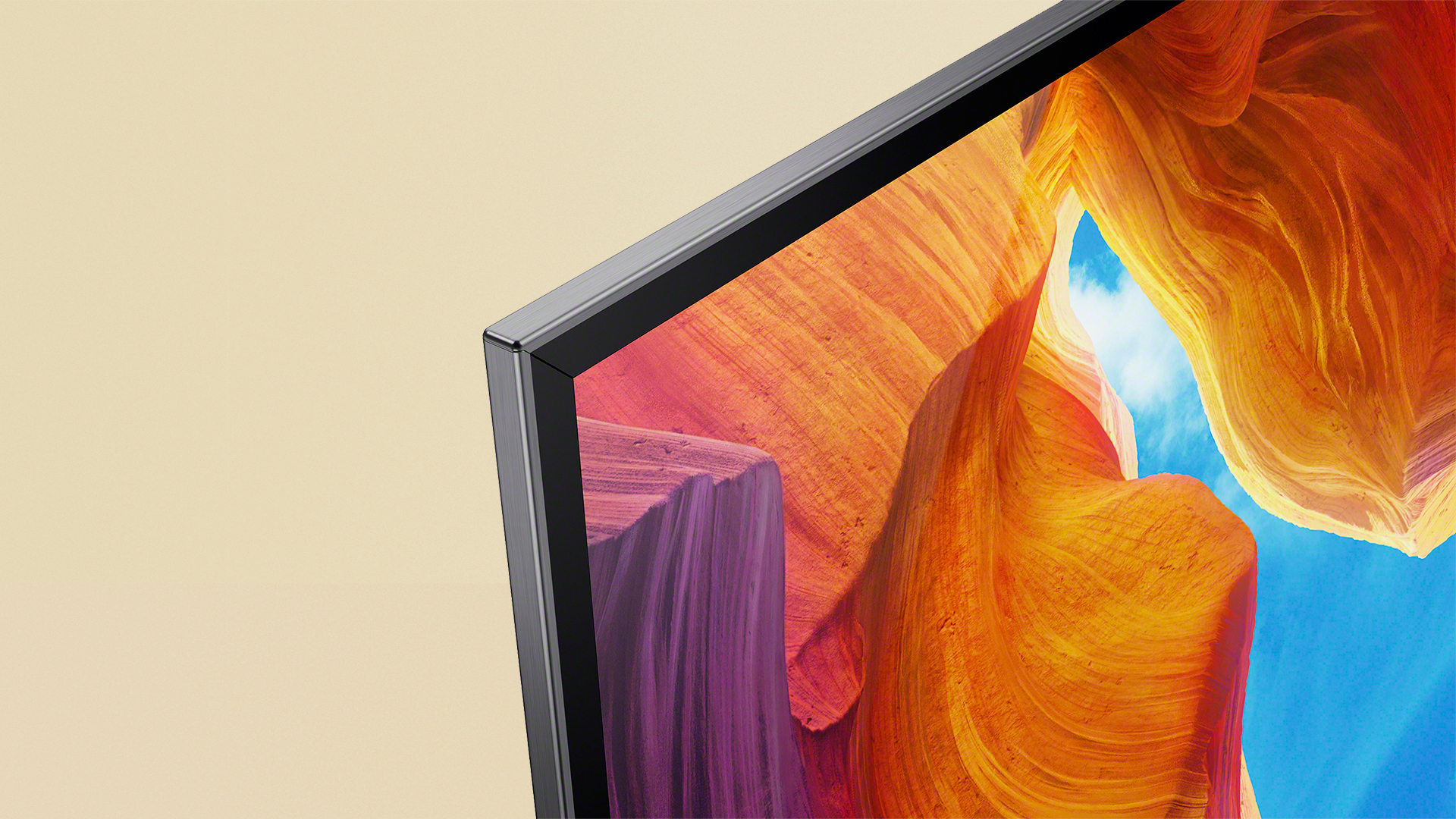
The main area where things get complicated with the 65XH9505’s pictures is with HDR shots that contain a strident mix of very bright and very dark areas. You can at times see quite extended areas of light around the bright objects in such content, though crucially, thanks to Sony’s impressive backlight controls, the blooming is both faint and undefined at its edges – two things that make it much less distracting than it would be otherwise.
There’s no doubt that Samsung’s top-end TVs suffer much less with this backlight blooming effect. However, they achieve that by dimming down stand-out bright picture elements much more than the 65XH9505 does. In fact, Sony’s set barely dims such bright objects at all.
Which of these approaches to backlight management you prefer will be to some extent a matter of taste. Do you feel you’re more likely to be distracted by the aggressive brightness adjustments on the Samsung sets, or the greater backlight clouding on the Sony set? Your typical viewing environment might play a part in this, since in bright rooms the Sony’s faint clouding will be less noticeable, while the brightness it retains with stand-out bright object will matter more.
All in all, Sony’s backlight control algorithms can be considered pretty remarkable taking into account how relatively few dimming zones it has in relation to its high brightness. There is, though, one situation where Sony’s approach really does come a cropper: when you’re watching a wide aspect ratio film with black bars above and below it the picture.
Here, the blooming from a bright area in the picture can sometimes spill out into the black bars, at which point it becomes much more noticeable, drawing your eye away from the action you’re supposed to be watching – especially if the bright object causing the blooming in the black bars moves, dragging the area of blooming with it.
The only other small issues we have with the 65XH9505’s pictures are that reds can sometimes look a touch orange, and that sometimes subtle shading details are lost in the very brightest parts of HDR pictures.
However, where this latter issue is concerned, Sony’s approach to handling HDR actually seems to help the 65XH9505’s HDR pictures look exceptionally dynamic, enabling it inject life into bright highlights of HDR pictures with an extra hit of intensity compared with most rivals. Even rivals that ostensibly boast higher levels of peak brightness.
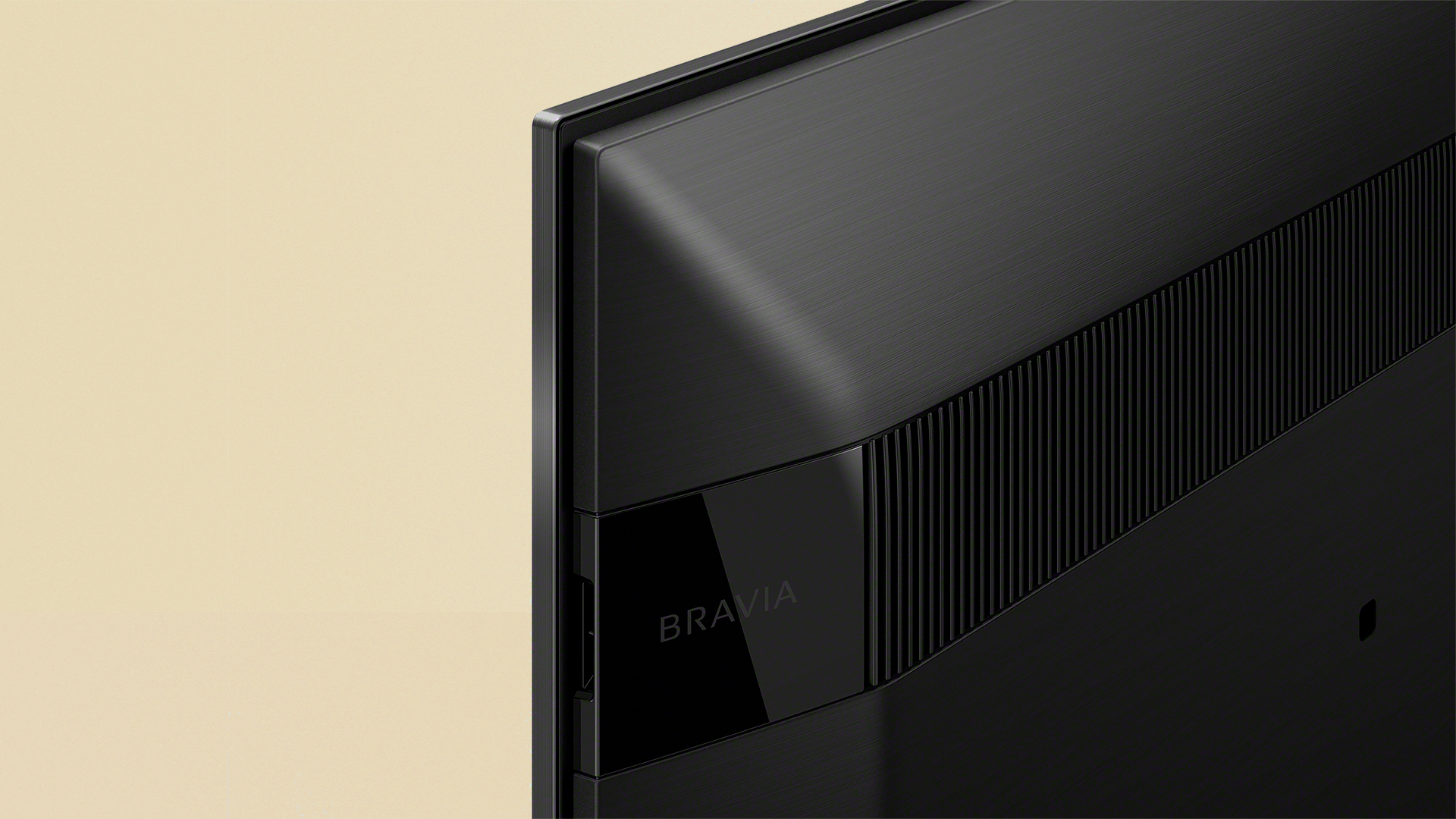
Sony XH95/X950H review: Sound quality
The new audio features Sony has introduced to the 65XH9505 work wonders. The Multi-Audio system, for starters, helps to create a prodigiously large soundstage that casts sound far to the left and right of the screen. It does this, moreover, without making even dense, complex mixes sound incoherent, or treble details sound brittle.
The new speaker design pumps out prodigious amounts of volume without distorting or dropping out, too. On the contrary, the speakers partner the volume with an impressively open and well-rounded mid-range.
Despite the excellent scale of the soundstage, though, voices remain not just locked to the screen, but locked to the part of the screen where the person is talking from.
I wouldn’t say the on-screen sound placement is quite as accurate overall as the ‘Object Tracking Sound’ system in Samsung’s latest TVs. The size, dynamic range and precision of the sound the 65XH9505 makes, though, is more than enough to make the 65XH9505 one of the best-sounding TVs we’ve heard.
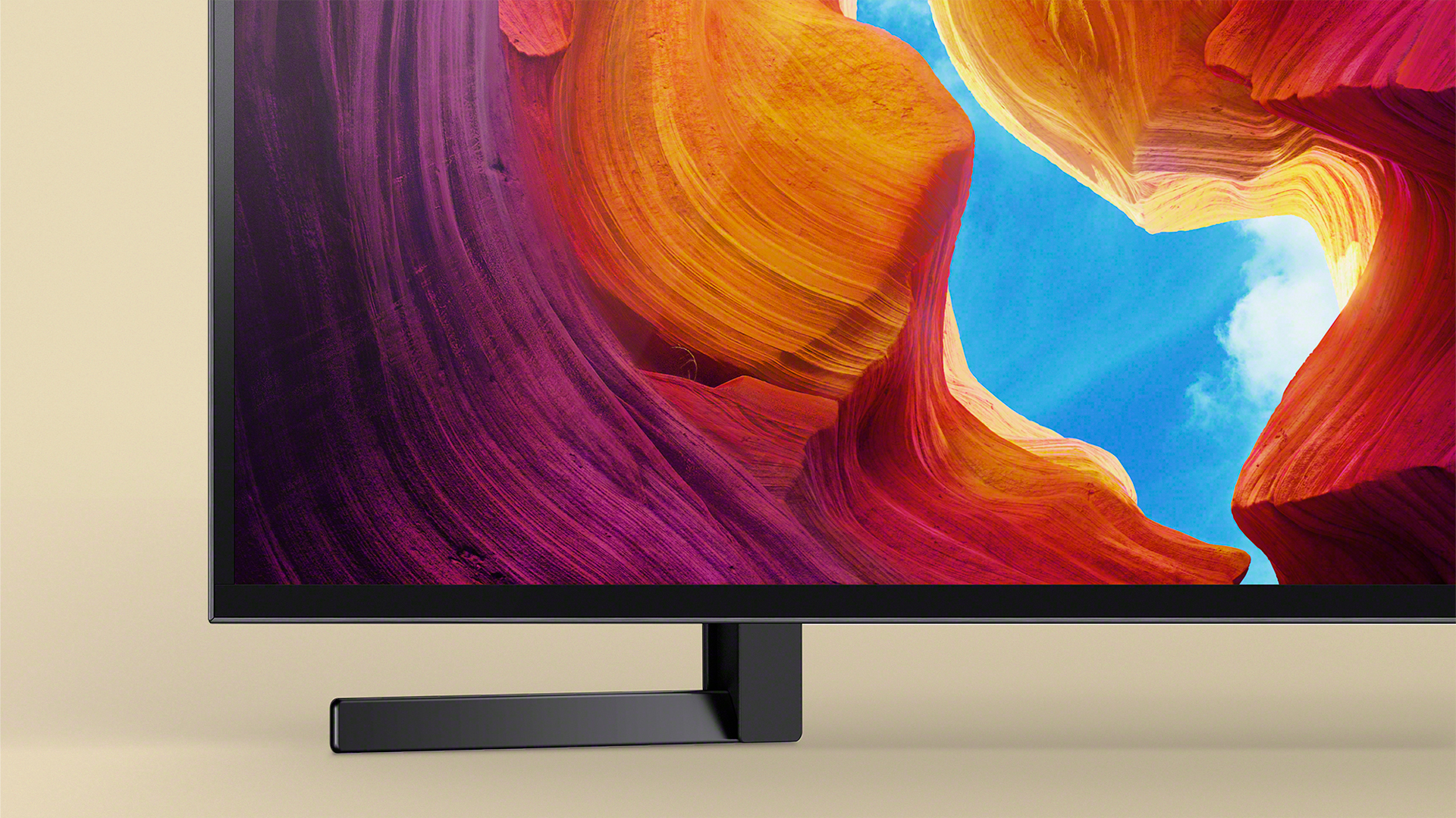
Sony XH95/X950H review: Design & Usability
The 65XH9505 is a very attractive TV – especially if you position its feet at the screen’s extreme corners, where they become so low profile that you don’t really feel aware of them.
The frame around the screen is narrow too, and the metallic trim that runs around its outer edge ties it neatly into the silvery feet.
The rear is chunky by modern TV standards, but then it does have to house a direct lighting system. In any case, the way the front frame stands proud of the rear hides the depth quite cleverly.
While it’s nice to see Sony providing the option of mounting the feet in narrower positions under the screen, for people wanting to put it on a relatively small bit of furniture, the resulting look to the TV is much less attractive – but the option is great to have anyway.
It’s a shame, too, to see the 65XH95050 doesn’t get really any cable management system, despite these being a popular feature of many of Sony’s recent TVs.
As usual with Sony TVs, the 65XH9505’s operating system is built around Android TV (generation 9). Personally we don’t see much to celebrate in this; the interface still looks and feels clunky, and remains limited versus some rival platforms in its customisation options and ability to present lots of content options in a friendly, digestible way. It’s still a little more buggy than other platforms too, though mercifully much less so than it used to be.
With Android still struggling to cater for all of the UK’s key terrestrial broadcaster catch up apps, Sony has thankfully turned to YouView to provide a friendly, nicely presented home for the likes of the BBC iPlayer, ITV Hub and so on.
However, for streaming services more broadly, there's very good support in Android TV, and you can always add one of the best 4K media streamers cheaply if there's anything missing (or if you just want a nicer interface).

Sony XH95/X950H review: Verdict
The Sony XH95/X950H isn’t perfect, but it is best-in-class at this price range. It combines barnstorming sound with pictures that, for the vast majority of the time, are truly things of beauty.
It lacks a few features (especially when it comes to gaming) now starting to appear pretty routinely on rival flagship 4K TVs, and its backlighting occasionally makes its presence felt a little too strongly.
But as we say, the latter is a trade off for the dazzling HDR peaks it can products, and if you're not worried about having all the latest gaming tricks, their absence won't bother you.
Sony XH95/X950H review: Also consider
When it comes to the competition, the Samsung Q90T/Q95T is a stronger TV overall in our opinion, but it comes with a huge price premium over this one, so we think a lot of people will find this more of a sweet spot.
Closer to this in price range is the Samsung Q80T, and for those into gaming, that's the better choice here – it's also excellent for image quality, and is very well-equipped for next-gen console features. Outside of gaming, it's a closer call – though for sports lovers, the Sony's motion handling is a better choice.
The closest OLED to check out is the LG CX, which demands a significantly higher price than the Sony, and can't quite match its brightness, but OLED's ability to handle contrast on a per-pixel basis and with near-infinite nuance in dark areas certainly puts the backlight blooming issues of the Sony in their place. For cinematic movie lovers with darker rooms, it may be a better choice, but the Sony will dazzle more during daylight.
If you like Sony's processing prowess and want the richness of OLED, the Sony A8/A8H is a superb choice. As with the LG CX, you lose a chunk of brightness compared to the XH95 (in fact, this set is less bright than the LG, which it's close to in price), but Sony's nuanced approach to image processing makes it maybe the best performer on the planet for subtle, natural, deep contrast, while still packing plenty of colour and HDR punch. Like the XH95, it's not a good option for gaming, but for movie viewers not worried about bright light washing out the screen, it's one of the best sets available.
Sign up to the T3 newsletter for smarter living straight to your inbox
Get all the latest news, reviews, deals and buying guides on gorgeous tech, home and active products from the T3 experts
John Archer has been testing TVs and AV gear for over 25 years, having worked on Home Cinema Choice magazine. He's a contributor to Forbes, TechRadar, Trusted Reviews, Wired and many more places – if you've owned a TV in the last couple of decades, John's probably reviewed it somewhere. He's seen so many hot new technologies come and go, like tears in the rain.
-
 Polar’s new subscription feature lands in the shadow of Garmin’s Connect+ rollout
Polar’s new subscription feature lands in the shadow of Garmin’s Connect+ rolloutPR genius or timing disaster? Polar’s new Fitness Programme adds adaptive training to its ecosystem
By Matt Kollat Published
-
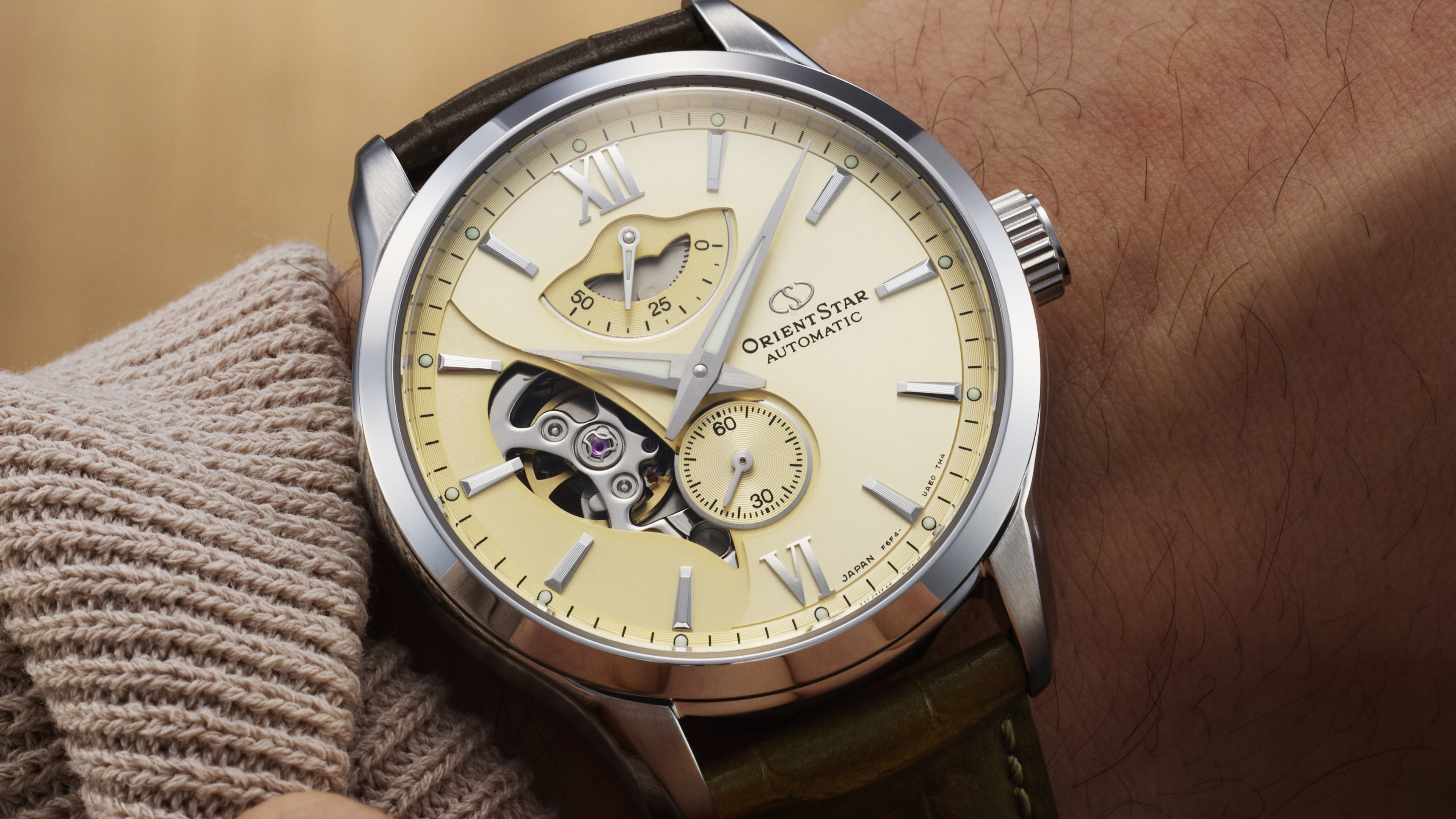 New Orient Star watches offer a glimpse of the magic within
New Orient Star watches offer a glimpse of the magic withinThere are two new skeleton pieces
By Sam Cross Published
-
 Netflix's most surprising 100%-rated sci-fi series returns with gorgeous trailer
Netflix's most surprising 100%-rated sci-fi series returns with gorgeous trailerLove Death + Robots is back for more
By Max Freeman-Mills Published